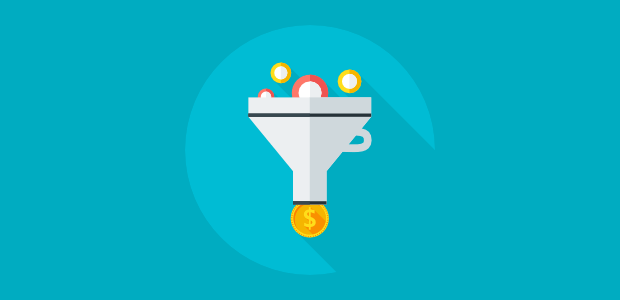Conversion Rate Optimization: Proven Ways to Convert More Visitors

You’re noticing an uptick in website traffic but not enough visitors are converting to sales. There are proven conversion rate optimization strategies to turn more of those visits into customers. In this article, we’ll explore two methods that can provide real results: evolutionary site redesign and understanding the benefits this incremental approach provides. You’ll learn actionable tips to implement on your own site and start seeing improved conversion rates. We’ll also look at the reasons why small, continual changes to your site’s design and content work better than a massive overhaul. With some strategic tests and tweaks over time, you can optimize your site to convert visitors into buyers and grow your business. Let’s dive in and start boosting conversions today.
What Is Conversion Rate Optimization and Why It Matters
Conversion rate optimization (CRO) refers to the strategic process of improving your website to increase the percentage of visitors who take a desired action, like making a purchase or signing up for your mailing list. By optimizing your site for conversions, you can turn more casual visitors into customers and grow your business. The first step is determining which actions constitute a conversion on your site. Do you want more sales? Email signups? Contact form submissions? Once you define your goals, start tracking key metrics like conversion rate, bounce rate, and average time on page. Analyze this data to find weak points on your site. See how real visitors are interacting with your pages. What are they clicking? What seems to confuse them? User experience testing tools can provide helpful insights into how to improve your site. You may find simple fixes, like changing the wording on a call-to-action button or rearranging page elements to make important information more prominent.
Conducting Conversion Rate Optimization Audits
If you want to significantly boost your conversion rates, conducting an audit of your website is crucial. By analyzing how visitors interact with your site, you can uncover obstacles preventing them from converting and make changes to smooth the path to purchase.
· Analyze Your Analytics
Your analytics tool (like Google Analytics) contains a goldmine of information about how visitors use your site. Look at things like bounce rates, exit pages, and conversion funnels to see where visitors are dropping off. Are product pages highly trafficked but have low conversion rates? That could indicate issues with page layout, form fields, or product information.
· Watch Recordings of Visitor Sessions
Seeing live visitors interacting with your site can be hugely insightful. Look for behaviors like frustration, confusion, or distraction. Note any pages or elements where visitors seem to struggle. Watch for visitors who abandon their carts or leave the site from a checkout page. Try to understand why they didn’t complete the purchase.
· Survey Your Visitors
Asking visitors directly about their experience on your site is a great way to uncover issues. Survey questions can focus on overall satisfaction, ease of use, reasons for not converting, and more. Look for any trends in the feedback and make note of suggestions for improvement. Your visitors will appreciate that you value their input!
Improving Site Navigation and User Experience
A seamless user experience is key to keeping visitors engaged on your site. If people struggle to find what they’re looking for or navigate between pages, they’re more likely to bounce. As an ecommerce store owner, improving your site’s UX should be a top priority. Your menu is the gateway to the rest of your site. An overly complicated menu crowded with options can overwhelm visitors and make it hard for them to find what they want. Pare down your menu to just a few main categories, with drop-downs for subcategories. Grouping similar products together makes navigation intuitive. For example, have main menu items for “Clothing”, “Accessories”, “Home Decor”, rather than listing every product type. Visitors will navigate more confidently if each page on your site has a similar and predictable layout. Use the same template for all product pages, with images, descriptions, reviews, and add to cart buttons in the same place. This consistency means customers know exactly where to look for key information and won’t feel disoriented moving between pages.
Paspartoo is a close team of talented and creative Shopify experts united by a common goal. We are committed to empowering businesses to thrive online, and we strive to create websites that are not only visually stunning but also profitable.
Optimizing Landing Pages and Forms
· Focus on a Clear Call-to-Action
A good landing page has a singular, obvious call-to-action that conveys what visitors should do next. Make your CTA prominent by placing it front and center on the page. Use an eye-catching button or link and word it compellingly, like “Start your free trial today!” or “Learn more about our services.”
· Streamline Your Forms
Long or complicated forms can frustrate visitors and cause them to abandon the page. Keep your forms short and simple by only asking for essential information. Use clear field labels and minimize the number of form fields when possible.
· Offer an Incentive
Providing an incentive, like a discount or free resource, encourages visitors to convert by completing your form or making a purchase. For example, you might offer “10% off your first purchase” or “Download our free eBook when you sign up today.” Make the incentive prominently visible on your landing page to maximize its impact.
· Pre-populate Fields When Possible
If you have information about your visitors from previous interactions or their account profiles, use it to pre-populate form fields. When fields are already filled in, visitors are more likely to complete the form because less work is required. However, always give visitors the option to change or delete the pre-populated information.
· Simplify Your Checkout Process
Just like forms, a complicated checkout process can deter visitors from completing a purchase. Only ask for necessary billing and payment details. Give options to save information for faster checkouts in the future. Make payment options clearly visible so visitors can pay quickly and securely using their preferred method.
Conclusion
You now have a solid grasp of conversion rate optimization and some proven tactics that can help convert more of your website visitors into customers. Start by understanding your visitors and optimizing for them. Test changes thoroughly before rolling them out. Prioritize landing page optimization and craft persuasive calls-to-action. Leverage the power of social proof. And don’t forget small details like page speed. Implementing even a few of these tips can add up to big improvements. Ready to get started? The conversion optimization gurus at Paspartoo can help take your website and online business to the next level. With their expertise in beautiful, profitable website design, you’ll be well on your way to increased conversions in no time.



